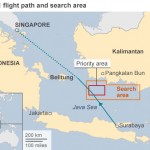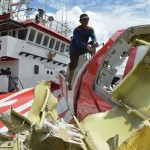Specialist bags used in the recovery of bodies following fateful plane crash over Christmas period. Bags are designed to easily float to the surface when in use. Although, a sombre incident this application of specialist bags sparked our interest.
The flight crashed last month killing the 162 people on board. The flight – flying between Indonesia and Singapore at the end of December, when it ran into bad weather and disappeared from radar systems. So far only the tail of the plane has been found. Diving teams will be taking on the search operation shortly.
The dive team is to be a combination of highly qualified volunteer civilian divers and military divers. The aim find the plane and recover as many of the bodies on board as possible. A volunteer diver commented “We have the ability to dive in tight and overhead environments and in harsh conditions so we want to contribute our skills for this rescue effort”
The planes fateful journey took it into the Java Sea. The sea is considered to be relatively shallow but divers face large waves, strong undercurrents and poor visibility on the muddy seafloor. A diver commented “We have to work with our hands. We use all our senses. If needs be, we will crawl on the bottom and find things.” “We are trained for that. That’s why we are here.”
Those are not the only challenges they will face. The plane is believed to be upside down and stuck deep in the mud. Many of the passengers may also still be strapped to their seats and getting them out will be tricky. Divers will have to collect their body parts before putting them in a bag underwater that is then floated to the surface.
These bags appear to have been designed to be lightweight in a mesh fabric. The bag opens widely in the style of an old-fashioned coin purse, to help divers when working in currents and low visibility. The bags resemble a large suit bag once in use, which the diver can safely guide to the surface.
Best of luck to the recovery teams and well wishes to the families who have been touched by this tragedy.



